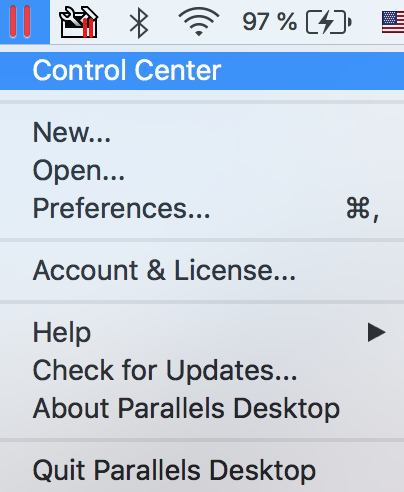
- #Parallels for mac unable to detect operating system how to
- #Parallels for mac unable to detect operating system mac os x
- #Parallels for mac unable to detect operating system .exe
- #Parallels for mac unable to detect operating system pro
- #Parallels for mac unable to detect operating system windows 8.1
#Parallels for mac unable to detect operating system mac os x
2 EaseUS Partition Master Free Edition Read more about Parallels here: Run all Windows programs on Mac OS X with Parallels. Click it to see all your apps and associated files. Type d to delete a partition Option 1: Delete the Recovery Partition With Terminal.
#Parallels for mac unable to detect operating system how to
This tutorial explains how to install Parallels Desktop for Mac and setup of a Windows XP virtual machine. Click Window from the top menu, choose Control Center.
#Parallels for mac unable to detect operating system .exe
exe files and some other files still show the parallels logo, as if it wants to open them in parallels. I am however ignorant of the UEFI boot process and firmware on Mac, someone else should be able to help you here to add the entry.Right-click on your virtual machine and select Remove. However, I understand that it is enough just to specify your HFS+ volume for it to boot. In short, what you need to do now is to add a new boot entry in your firmware menu pointing to your OS X bootloader, which I have gathered from the web to be /System/Library/CoreServices/boot.efi on your HFS+ volume. Your firmware boot menu would have originally contained only an entry for Mac, and for some unknown reason Windows Setup seems to have wiped it out. BootCamp as a bootloader is now no longer required. What seems to have happened is that your Windows seems to have switched modes at some time, and has established itself as a UEFI-booting OS on GPT. What BootCamp does is to apply an ugly hack to make it look like being an MBR partitioned disk to Windows, which can then boot via BIOS. On such machines Windows can use GPT disk partitioning and boot from your firmware boot menu without any need of BootCamp.
#Parallels for mac unable to detect operating system pro
Yours is quite a new model of MacBook Pro : Your firmware would be UEFI compliant.

This How do I make my Boot Camp partition bootable again? seems to be very close to my problem, but rEFIt is distributed in CDR format, I tried to convert that to ISO and burn to a USB with no luck, the system won't see the USB.Īnyone knows of other ways to fix Bootcamp loader to show OSX partition ? I checked Disk Management and the OSX partition is still present (partition 1):Īnd this is the output of MS DiskPart utility:

I have tried a couple of Windows utilities, trying to change the Active partition, but for some reason that option is always grayed out, even DiskPart doesn't allow to set it. The laptop is a MacBook Pro November 2013 model, with one original SSD drive (without DVD drive, however I have an external one) and I don't have a OSX installation disk, so I could not try recovery utilities etc. Anyone knows how to recover the OSX partition, so that I can boot into OSX ? I'm happy to drop Windows if that's the case, but I cannot proceed with a fresh install wiping OSX. Windows works just fine (I'm using it now) but my main setup and a lot of work in progress is on OSX so I really need to recover it. When I select 'OSX' from the control panel Bootcamp utility, and reboot, the system goes into Windows regardless. Click continue to ignore this and proceed with the install through Parallels. Parallels will respond with 'Unable to detect operating system'. For more information about Parallels Transporter system requirements, see Host Computer. For Mac operating systems, Parallels Transporter is provided as a part of the Parallels Desktop package and supports two migration methods: remote and virtual. VMware Workstation, VMware Player, VirtualBox, Parallels Desktop for Mac and QEMU are examples of type-2 hypervisors. These hypervisors abstract the guest operating systems from the host operating system. A guest operating system runs as a process on the host. However, when you start a game, SmartMouse automatically captures the mouse input in the. OS application, the mouse moves freely between the guest operating system and Mac OS X.

Note: 1.If you're unable to set a Windows program to open when you insert a CD or DVD, be sure that. If Parallels Doesn't Detect Windows Correctly.

When I hold the ALT button at boot, the menu shows only Windows and there is no option to boot OSX.įinally, if you are running Parallels and you find that your USB devices are being captured by Mac OS X but not your virtual guest OS, you can also go to the Devices menu, find the peripheral in question, and choose it to have Parallels wrest control from Mac OS X and hand it to your guest operating system.
#Parallels for mac unable to detect operating system windows 8.1
I installed Windows 8.1 Enterprise via Bootcamp on my MBP (Nov 2013 model), now I can only boot into Windows, no way to boot into OSX.


 0 kommentar(er)
0 kommentar(er)
